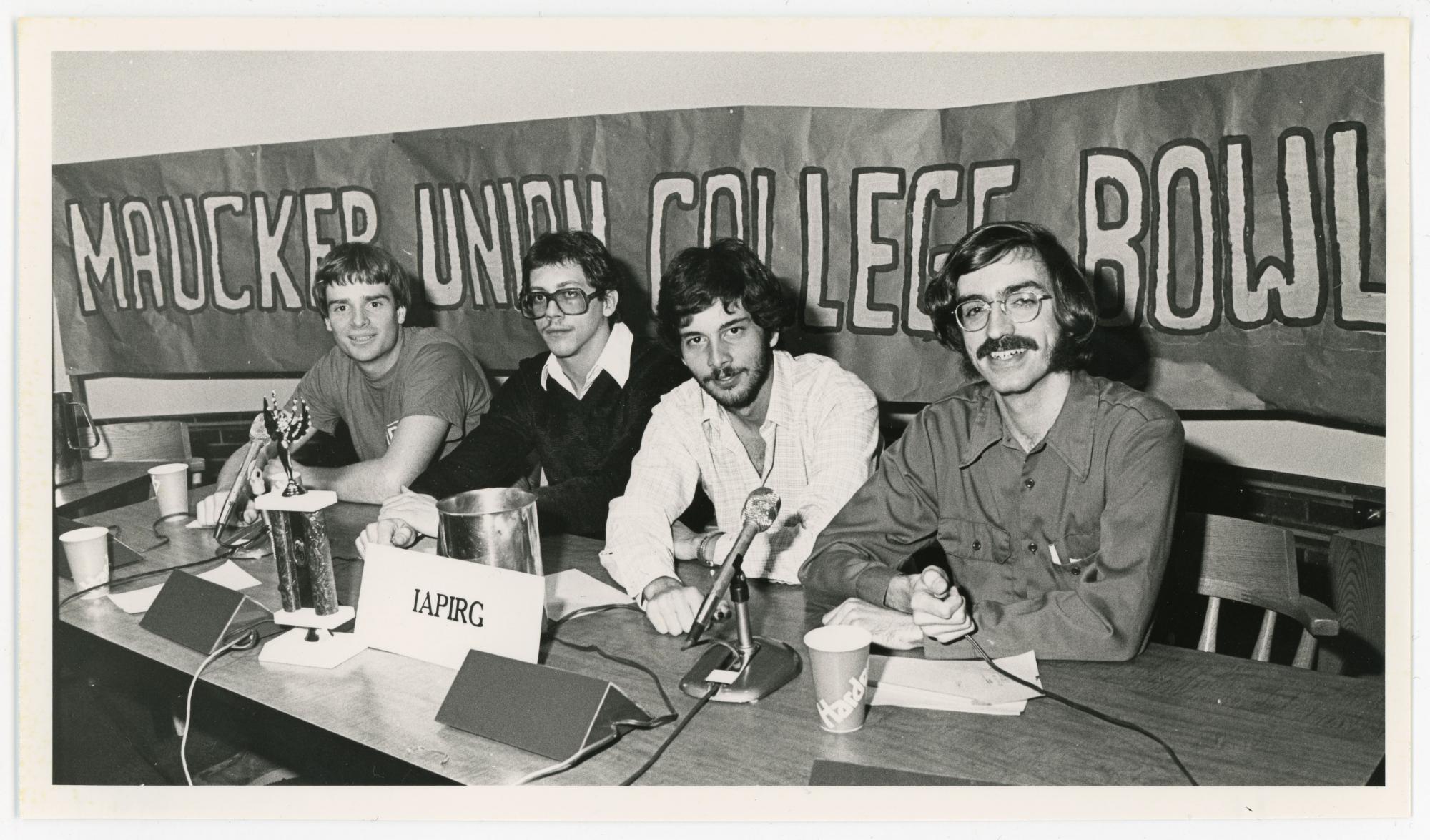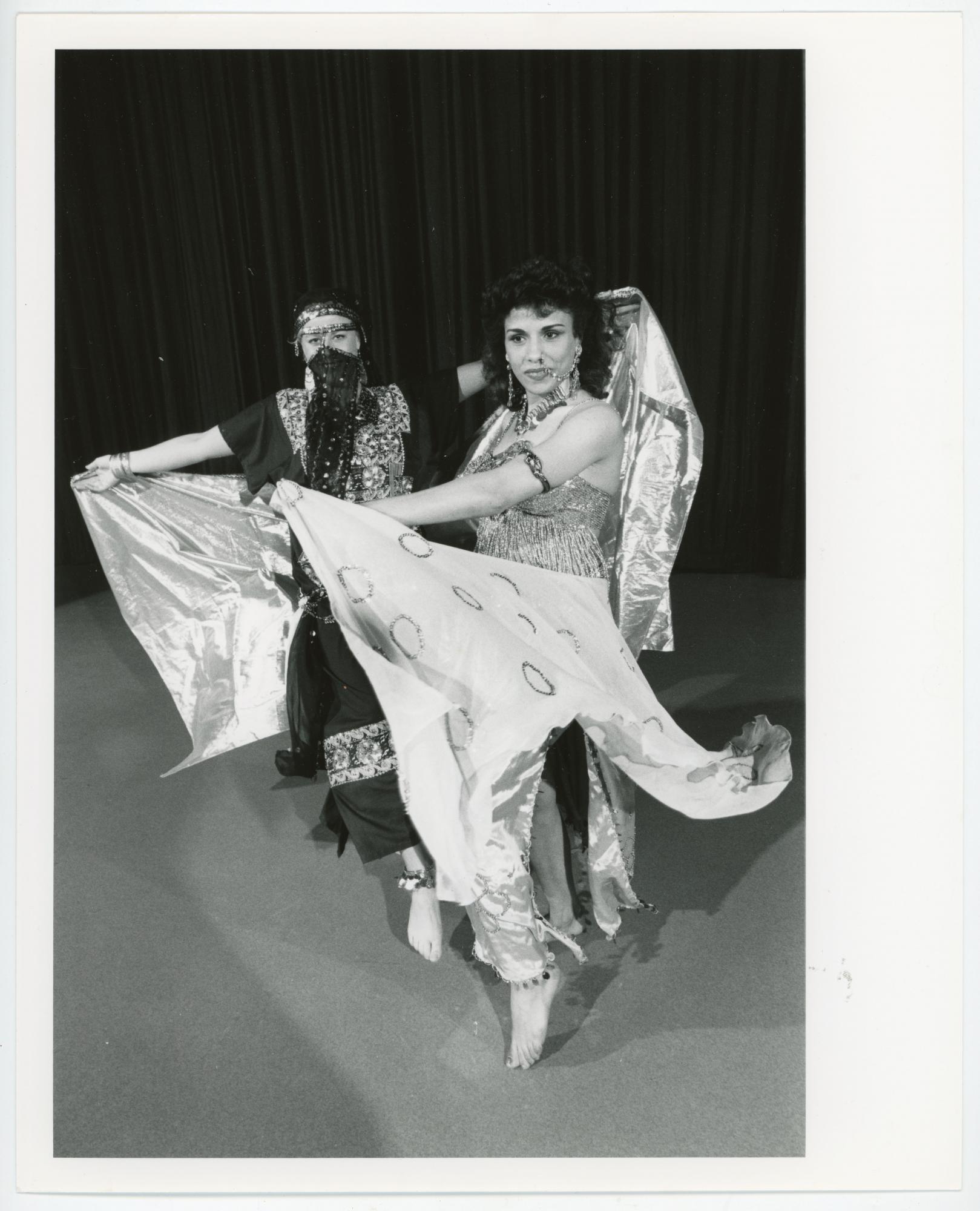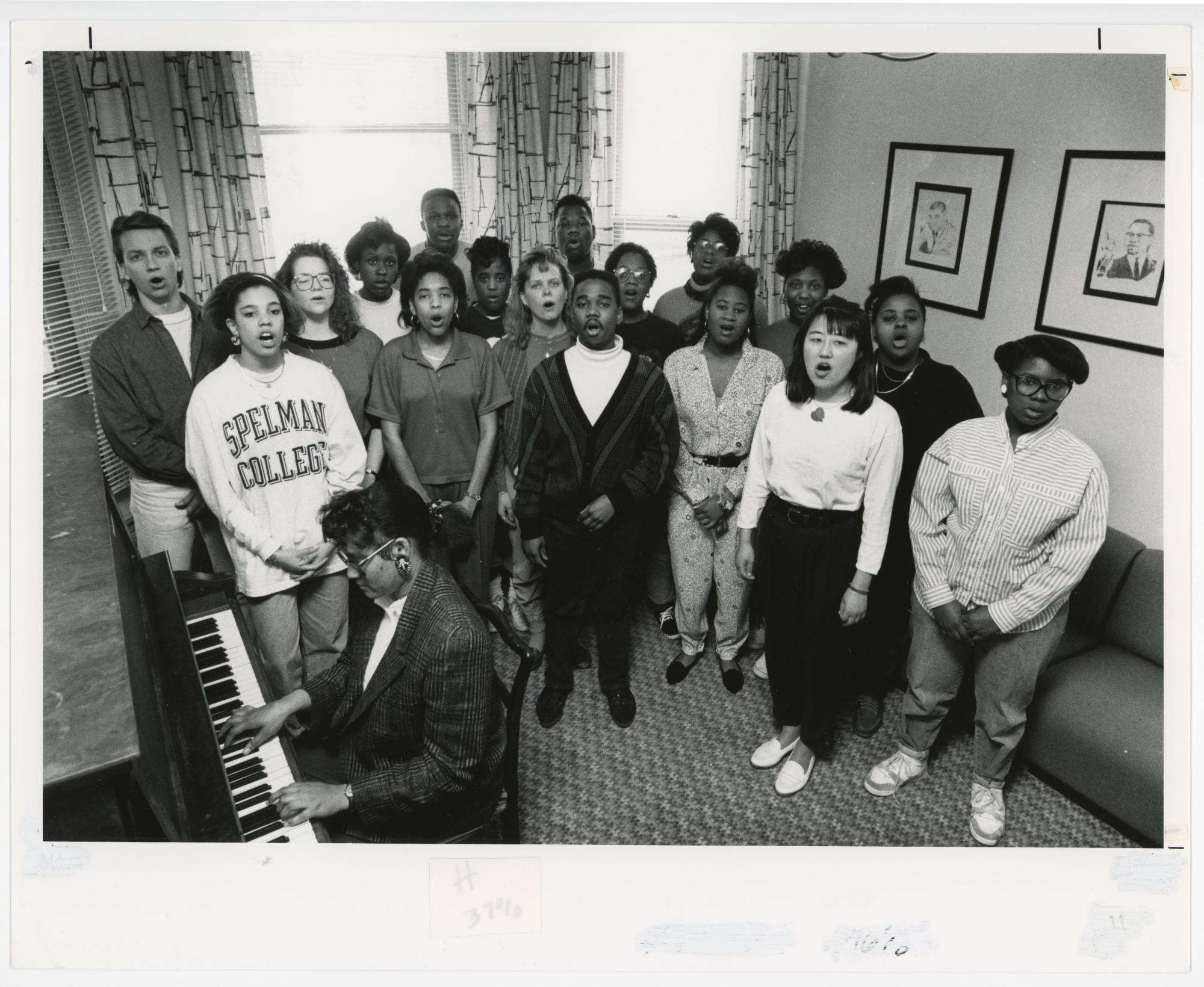Highlight: UNI Student Organizations
As times have evolved, the University of Northern Iowa (UNI) has had student organizations come and go. Thankfully, pictures in the Photograph Collection, along with other materials in University Archives, captured and saved these moments in time. The photograph collection is a great source for visual information of activities, buildings, departments, presidents, and so much more. It contains more than 490 boxes and is so enjoyable to look through! Many alumni, professors, students, and other library patrons use these pictures to identify relatives or to find information about organizations that they were once involved in.
From my perspective, as a current UNI student, one of the most enjoyable parts of UNI is the activities and organizations offered. These organizations allow students to join something they are interested in, help further their major, find new friends, and become closer to staff and faculty. Through these organizations, new memories and friendships are found and for many, these are their fondest moments from college. However, there are some organizations that once were a “fan favorite” but are no longer available today, while others still thrive decades later. Below are some organizations that have ended and some that have continued to this day. Organizations like these are so important to student life on campus and have made a lasting impact on students, alumni, and faculty.

The College Bowl
The College Bowl was an educational organization started in 1963 where teams of students would compete to answer questions from categories -- like arts, sports, or current events -- by buzzing in if they knew the answer. After they buzzed in, they were allowed three seconds to answer, but if they couldn’t answer in their allotted time, the question would be given to another team. This game was about speed and quick recall. However, you didn’t need to be a genius to compete. Many students used this platform to promote other organizations like fraternities, sororities, or dorm floors. If a team won districts, they had the chance to compete in regional and national competitions to win money. Although it sounds like a lot of fun, this organization only lasted until 1992 when it was never picked up the next year (McIntire).

The Folk and Ballroom Dance Club / International Dance Theatre (IDT)
The Folk and Ballroom Dance Club was founded in 1957 and provided an opportunity for students to perform a variety of international folk dances. Their performances usually consisted of accompaniment by live music from the international music ensemble and dance members that included students, faculty, and members of the community. Choreographers from all over Iowa taught dances, and international students also taught dances from their home country (Smith). Today, this club is called International Dance Theatre (IDT), and they have continued to support traditional dances. However, they have added more Americanized styles like tap and hip hop to better adapt to the times. They changed the purpose of their club to better reflect the focus on ethnic forms used for theatrical purposes. Although changing some dance styles, most of the dances are still choreographed by students, and international students are still encouraged to bring dances from their country to share with the group. As the club has developed over the years, the opportunity to attend conferences and workshops has been added. These workshops and conferences allow students to learn new dances and return back to UNI to teach their fellow peers (IDT Dance Company).

UNI Gospel Choir
Before the Gospel Choir became a UNI club, this group used to travel around the Cedar Falls/Waterloo area to perform for the community (White). However, in 1985, Jay T. Hairston, pushed for the Gospel Choir to be officially affiliated with UNI. After that, the Gospel Choir gave free workshops and concerts which promoted African American culture, bridged gaps between races, and shared music with the community. Gospel concerts performed in collaboration with Iowa State, University of Iowa, Drake, Grinnell, and Wartburg over the years promoted these features and allowed them to become more well known around Iowa (“Students learn history…”). Today, the Gospel Choir is not active and seems to have ended around 2005. Although the organization has been discontinued, their message is still important to this day and is prevalent in today’s society. Current organizations that promote a similar message are the African Union, Black Student Union, and the MOVEment.

Student Council / Northern Iowa Student Government (NISG)
Students began to discuss the creation of a Student Council on campus in 1916, and it became official in 1919. This council was created by President Seerley and promoted cooperation between students and faculty. It provided an opportunity to discuss matters of student power, events on campus, and current student issues (Colburn, Bragonier). This group of student representatives has been built in small increments over the years and has focused on multiple issues throughout their convened time. This organization has been key in scheduling Homecoming events, discussing topics of racial and gender inequality, budget allocations, creating programs about drug abuse and sexual assault awareness, and so many more. After several name changes as this general group evolved, this organization is now called Northern Iowa Student Government (NISG), and has made true change happen on campus within the last 20 years and will continue to make change in the future.
This highlight provides just a quick overview of some of the organizations that have appeared and made a difference on campus over the years. Although some of them are not active anymore, their legacy lives on through the Photograph Collection and other collections the University Archives. Online information about the yearbooks, current organizations, and upcoming events are available on the UNI website, while past organizations can be researched through IndexUNI and the Student Organization collections. These are all great resources to use when looking into past or present organizations around campus. Of course, you can always contact the faculty and staff or make an appointment to visit SC&UA, located on the third floor of Rod Library, for further information about campus history and to browse the Photograph Collection in person.
Contributed by Library Student Assistant Katie Currier, September 2020.
References
- Bragonier, Wendell H. “Wendell Bragonier reviews work of Student Council.” College Eye, 24 July, 1931, vol. 23, no. 8, p. 3.
- Colburn, Esther M. “Purpose of the Student Council; a word about its organization.” College Eye, 22 November, 1916, Vol. 8, No. 10, p. 1.
- “IDT Dance Company.” Department of Kinesiology. University of Northern Iowa. coe.uni.edu/kinesiology/idt-dance-company. Accessed 23 September 2020.
- McIntire, Jonna. “Teams match wits in College Bowl.” Northern Iowan, 20 October, 1989, vol. 86, no. 14, p. 3.
- Smith, Jessica Dee. “Campus clubs: folk, ballroom dancing.” Northern Iowan, 28 September, 2004, vol 101, no. 9, p. 7.
- “Students learn history of unique music form as members of new UNI gospel choir.” Public Relations News Release, 20 November, 1985, vol. 1985, no. 153, p. 1.
- White, Ryan A. “UNI Gospel Choir to expect greater interest.” Northern Iowan, 30 August, 1988, vol. 85, no. 2, p. 11.
